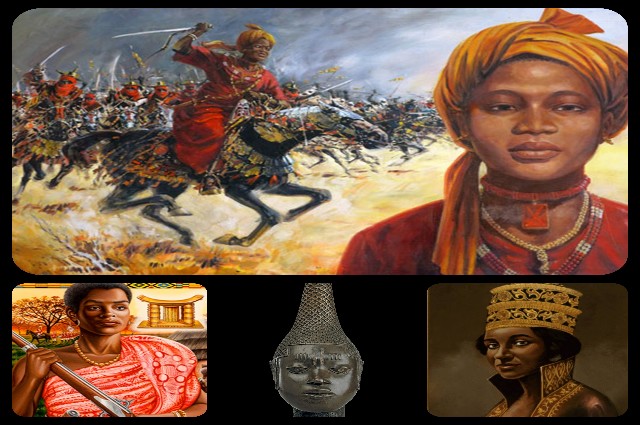From queens and chiefs to leaders of movements, women have undeniably etched their names into the chronicles of African history. Whether referred to as boss ladies, feminists, women’s rights activists, or even dictators, these African queens and warriors have bravely guided men into battle, governed realms, and wielded significant influence. Many of them valiantly opposed European subjugation and the shackles of colonialism.
10. Ranavalona I
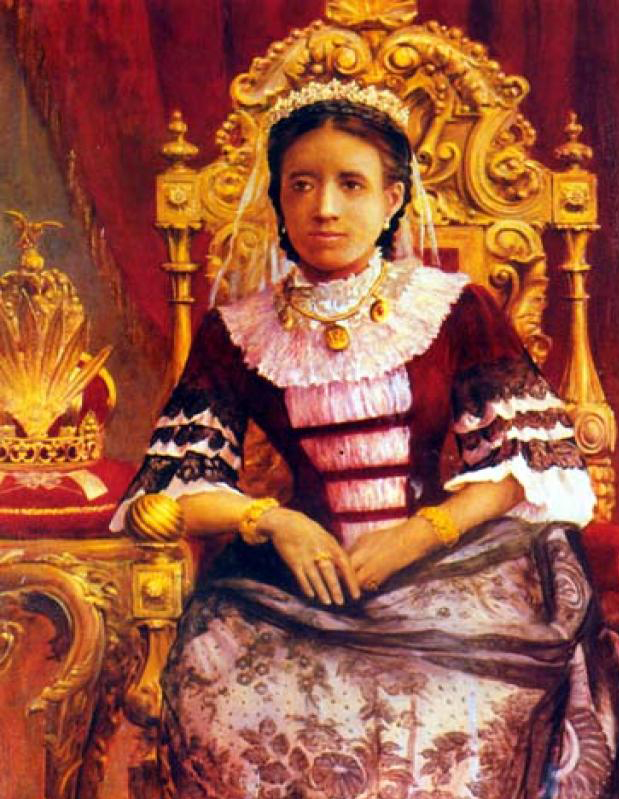
In 1828, Ranavalona I ascended to the throne of the Kingdom of Madagascar, ruling for a remarkable 33 years. Following the untimely death of her young husband and second cousin, Radama the first, she positioned herself as queen and embarked on a policy of isolationism and self-sufficiency. With determination, she severed economic and political ties with European powers, successfully repelling a French attack on the coastal town of Foulpointe.
In 1835, Ranavalona, considered one of the most ruthless African queens in history, prohibited the practice of Christianity among the Malagasy population, leading to the departure of nearly all foreigners from her realm within a year.
On August 16, 1861, the queen peacefully passed away in her sleep. In her honor, twelve thousand zebu were sacrificed, and their me*t was distributed among the people, with an official mourning period lasting nine months. While Ranavalona has traditionally been portrayed as a cruel tyrant, modern historians recognize her as a shrewd politician who effectively safeguarded the political and cultural sovereignty of her nation against European encroachment.
Under Ranavalona’s rule, she heavily relied on the traditional practice of fanompoana, which involved forced labor as a form of tax payment. This allowed her to complete public works projects and build a formidable standing army of 20,000 to 30,000 Merina soldiers. These forces were deployed to pacify remote regions of the island and expand her realm. However, the combination of frequent warfare, disease, grueling forced labor, and harsh trials by ordeal involving a poisonous nut from the Tangena shrub resulted in a significant loss of life among both soldiers and civilians throughout her 33-year reign. The population of Madagascar plummeted from 5 million in 1833 to 2.5 million in 1839.
Despite Ranavalona’s policies causing substantial challenges, foreign political interests in Madagascar remained unwavering. Divisions between traditionalist and pro-European factions within the queen’s court presented opportunities for European intermediaries who sought to expedite the succession of her son, Radama II. The young prince disagreed with many of his mother’s policies and was open to French proposals for exploiting the island’s resources, as evidenced by the Lambert Charter he negotiated with a French representative in 1855. However, these plans ultimately did not succeed, and Radama II did not ascend to the throne until Ranavalona’s passing in 1861, when she was 83 years old.
Ranavalona was generally condemned by her European contemporaries, who depicted her as a tyrant or even mentally unstable. These negative portrayals persisted in Western scholarly literature until the mid-1970s. Subsequent academic research has offered a reinterpretation of Ranavalona’s actions, presenting her as a queen striving to expand her empire while safeguarding Malagasy sovereignty from the encroachment of European cultural and political influences.
09. Amanirenas

The Europeans referred to the African queens of Ethiopia as Candace or Kandake, believing them to be wives of the gods or even divine themselves. One remarkable figure among these African queens is Candace of 332 BC, whose story continues to inspire to this day. Despite limited knowledge about these queens, this particular legend has persevered. Her true name is believed to be Amanirenas. She was known as a formidable, strategic, and unifying leader, having lost one eye in the battle against the Romans.
According to a tale in “The Alexander Romance,” when King Alexander the Great sought to conquer her lands in 332 BC, she strategically positioned her armies to confront him and personally rode into battle on an elephant. After assessing the strength of her forces, Alexander chose to withdraw from Nubia and redirected his efforts toward Egypt. This account originates from “The Alexander Rom*nce” authored by an unknown writer. While it is often cited, there are no historical records from Alexander’s time that validate this event. The story of Alexander’s encounter with Candace appears to be legendary in nature.
08. Nzinga
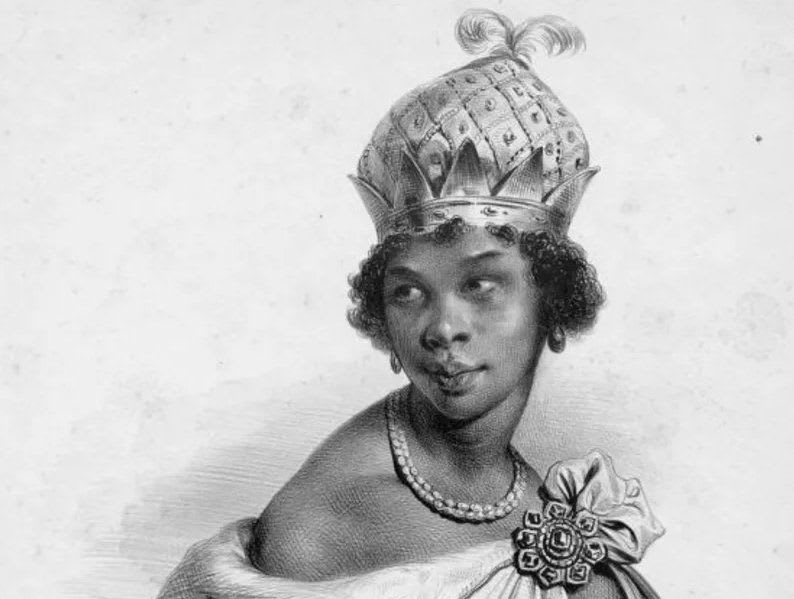
Queen Nzinga of Angola is renowned as one of the most revered African queens who fiercely resisted European colonization. From the 1620s to the 1660s, Nzinga Mbande led a relentless war against the Portuguese in Angola that spanned four decades. Nzinga’s prowess as a negotiator and military strategist remains unparalleled. She directly contributed to reducing the Portuguese colony in Luanda (present-day Angola) to a mere few square miles.
Nzinga had three primary policy objectives. First, she aimed to halt the destructive conflict between the Portuguese and her people, which had ravaged the plateau of Luanda. Second, she sought diplomatic recognition similar to what the Portuguese granted to Kongo. And third, she aimed to establish a mutually beneficial and lucrative trading relationship between Luanda and the European powers.
During the 1630s and 1640s, Nzinga forged an alliance with Dutch slave traders and utilized her wealth to solidify her position. She also challenged traditional Mbande resistance to women in politics by employing Mbande runaway slaves and others as mercenaries to combat local opposition when necessary. After persistent warfare against the Portuguese, she eventually negotiated a treaty with them that largely achieved her initial goals, and her policies continued to be successful until her passing.
For 40 years, Nzinga masterfully manipulated the Portuguese and the Imbangala to dominate Kimbundu politics. Her legacy, though complex, is substantial. Firstly, she was a monarch who inspired her people to resist European incursions. Secondly, her remarkable energy and position as a warrior and anti-colonialist serve as a powerful example of African women’s dedication to self-reliance and the preservation of their values.
Nzinga, one of the most influential and powerful African queens in history, managed to maintain relative peace until her death in 1663, at the age of approximately 81. She embraced Catholicism and was surrounded by missionary advisors whom she valued during the final eight years of her life.
07. Makeda
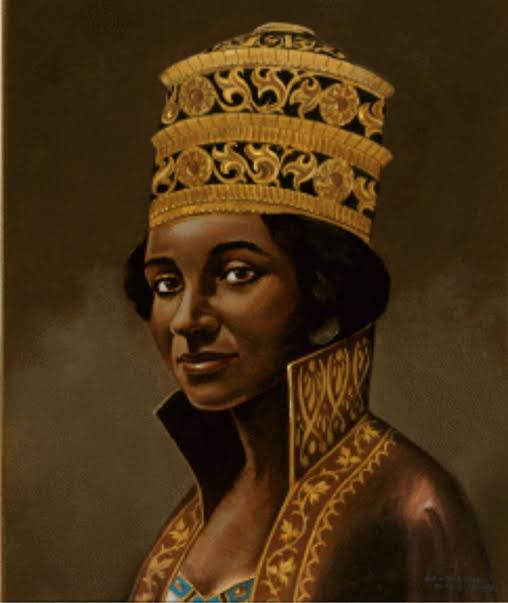
In 960 B.C., the nation now known as Ethiopia took center stage in history with the emergence of a remarkable queen, often referred to as Makeda, but more widely recognized as the Queen of Sheba. Makeda, a figure shrouded in mystique and grandeur, is regarded as one of the most influential African queens of her time. She is celebrated as the beloved of King Solomon of Judea.
Legend portrays Makeda as the enigmatic and majestic Queen of Sheba, while the Old Testament of the Holy Bible depicts her as an honorable and unnamed queen from the land of Sheba. Upon hearing of the great wisdom of King Solomon of Israel, she embarked on a journey to meet him, bringing gifts of spices, gold, precious stones, and exquisite wood. Her purpose was to test Solomon’s wisdom with challenging questions.
Enthralled by Solomon’s profound wisdom and immense wealth, the queen bestowed a blessing upon Solomon’s deity. In return, Solomon showered her with gifts and granted her every desire. Satisfied, Makeda returned to her homeland. Notably, Makeda’s immense wealth was evident as she presented 4.5 tons of gold, symbolizing great power and opulence.
Makeda, a stunning and influential black woman, was deeply enamored with Solomon and, out of love, converted to Judaism. It is said that she and Solomon had a son named Menelik I, who would later become the first Emperor of Ethiopia, establishing the renowned Solomonic dynasty.
06. Yargoje
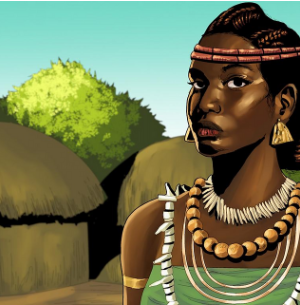
During the course of this documentary, you have likely become acquainted with the story of Queen Amina of Zaria, undeniably one of the most formidable African queens hailing from present-day Nigeria. However, not far from Zaria, another queen once ruled over a Hausa kingdom, nearly 200 years before Amina’s time.
Indeed, Queen Yargoje of Zamfara, in what is now North-West Nigeria, held her reign for an impressive 40 years, from 1310 to 1350. She undertook significant expansions and even relocated the kingdom’s capital from Dutsi to the more strategically defendable area of Kuyambana.
As one of the most influential African queens of her era, Yargoje was the eldest daughter of Dakka, the fifth King of Zamfara. Not only did she reign as queen, but she also held the esteemed position of head of the Bori cult, a pre-Islamic form of worship observed in certain parts of Hausaland. Under her rule, female chiefs were appointed for the first time in the Kingdom. This marked a significant shift, as female chiefs were not known prior to her reign. It is fascinating to note that her era was characterized by both longevity and tranquility, making it a prosperous period for her kingdom.
05. Idia
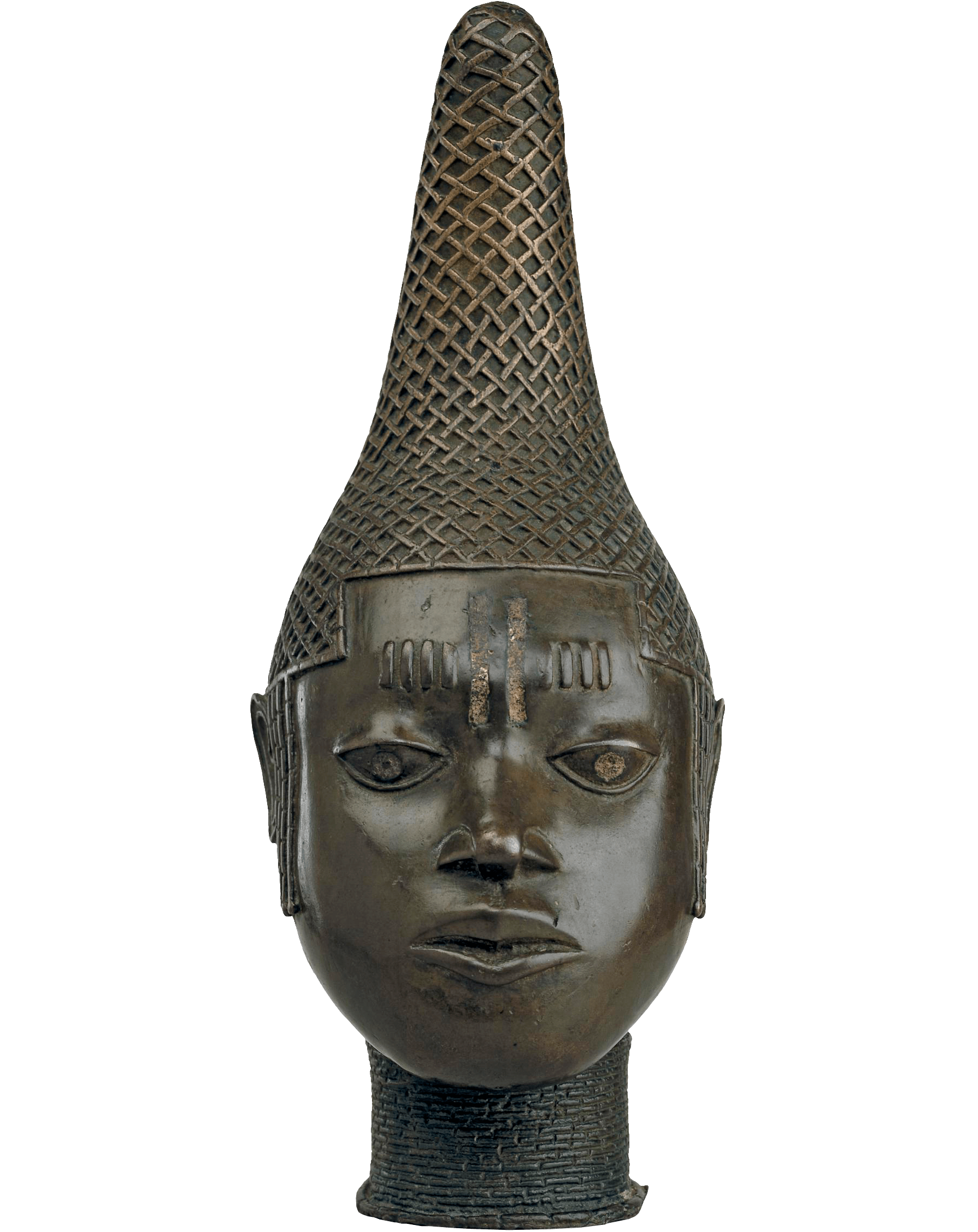
Queen Idia, the mother of Esigie, the Oba of Benin during the years 1504 to 1550 in present-day Southern Nigeria, played an immensely significant role in her son’s rise and reign. She is widely recognized as one of the most influential African queens in history, celebrated as a remarkable warrior who fought relentlessly before and during her son’s rule as the Oba of the Edo people.
After the passing of Oba Ozolua, his two powerful sons found themselves in a dispute over who would ascend to the throne. Esigie controlled Benin City, while his brother Arhuaran held influence in the equally vital city of Udo, located approximately 30 kilometers away.
In this critical moment, Idia rallied an army around Esigie at Unuame on the River Osse. Together, they defeated Arhuaran, securing Esigie’s position as the 16th king of the Benin Kingdom.
Following this triumph, the neighboring Igala people launched an assault across the Benue River, aiming to seize control of Benin’s northern territories. However, Esigie led his forces to conquer the Igala, effectively restoring the unity and military strength of the kingdom. Idia’s political counsel and her profound knowledge of medicine were widely acknowledged as instrumental factors in Esigie’s triumphs on the battlefield, and she was duly credited for these victories.
In recognition of her pivotal role, Idia became the first queen mother of Benin, bestowed with the prestigious title of lyoba by Esigie. She was also provided with a palace befitting her status as a revered Queen Mother.
04. Queen Nandi
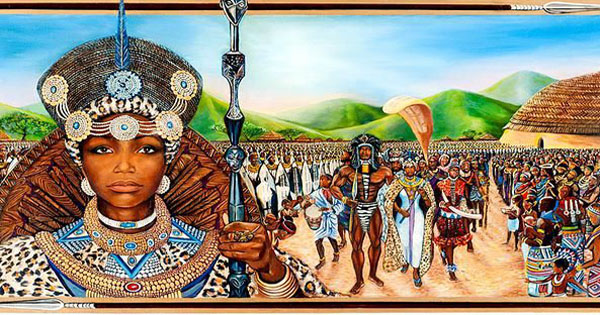
Nandi’s life was marked by unconventional circumstances. She not only became a mother outside of wedlock but also entered into a forbidden inter-clan marriage.
Her existence was marred by constant mistreatment from her husband’s other wives and their children. Eventually, Nandi reached a breaking point and made the decision to flee the Zulu tribe, taking her son Shaka with her.
Seeking refuge, Nandi and Shaka found solace among the Mthethwa clan. The clan’s leader, Diniswago, welcomed them and took Shaka under his wing, imparting valuable teachings on leadership and warfare. They remained with the Mthethwa clan until Shaka eventually returned to his own Zulu people.
Upon his return, Shaka asserted his claim to the Zulu throne. Now the king of those who once tormented his mother, Shaka appointed Nandi as the Queen of the Zulu people and relied on her as an advisor. He held Nandi in such high regard that he even worshipped her, elevating her to a god-like status.
Queen Nandi continued to provide guidance to her son until her passing on October 10, 1827. Even in death, she held significant influence over the Zulu tribe. As Shaka mourned his mother’s loss, he issued a decree that any family having a child within a year of Queen Nandi’s death would face execution. Nandi’s journey took her from a mistreated and marginalized third wife to becoming the revered Queen of the Zulu people, leaving an enduring legacy.
03. Yaa Asantewa

Yaa Asantewaa I, born on October 17, 1840, and passing on October 17, 1921, held the esteemed title of Queen Mother of Ejisu in the Ashanti Empire, which is situated in present-day Ghana. Her appointment to this role was bestowed upon her by her brother, Nana Akwasi Afrane Opese, who served as the Edwesuhene, or ruler, of Edwesu.
In the year 1900, Yaa Asantewaa I fearlessly led the Ashanti war, which is renowned as the War of the Golden Stool or the Yaa Asantewaa War of Independence. This significant conflict was waged against the powerful British Empire, as she stood as a symbol of resistance and determination for her people.
During the reign of her brother, Yaa Asantewaa witnessed turbulent times for the Ashanti Confederacy, including a civil war that spanned from 1883 to 1888. When her brother passed away in 1894, Yaa Asantewaa exercised her authority as Queen Mother and nominated her own grandson as Ejisuhene, the ruler of Ejisu. However, in 1896, the British authorities exiled her grandson and other prominent members of the Asante government to Seychelles, leaving Yaa Asantewaa as the regent of the Ejisu-Juaben district.
Following the exile of King Prempeh I, the British governor-general, Frederick Hodgson, demanded the surrender of the Golden Stool, the revered symbol of the Asante nation. This demand sparked a secret meeting among the remaining members of the Asante government in Kumasi to devise a plan to secure the return of their king. However, disagreements arose on the best course of action. It was at this crucial moment that Yaa Asantewaa, present at the meeting, courageously stood before the council and addressed them:
“How can a proud and brave people like the Asante sit idly by while white men seize their king and chiefs, and humiliate them by demanding the Golden Stool? The Golden Stool means nothing more than money to the white men, who have searched and dug everywhere for it. I will not pay a single penny to the governor. If you, the chiefs of Asante, are going to act like cowards and refuse to fight, then you should exchange your loincloths for my undergarments.”
To demonstrate her unwavering resolve to go to war, Yaa Asantewaa seized a gun and fired a shot in front of the assembled men. She was subsequently chosen by several regional Asante kings to lead the Asante fighting force—an unprecedented role for a woman in the history of Ashanti. The conflict that ensued, known as the Ashanti-British War of the Golden Stool or the “Yaa Asantewaa War,” saw Yaa Asantewaa commanding an army of 5,000 soldiers.
02. Nefertiti
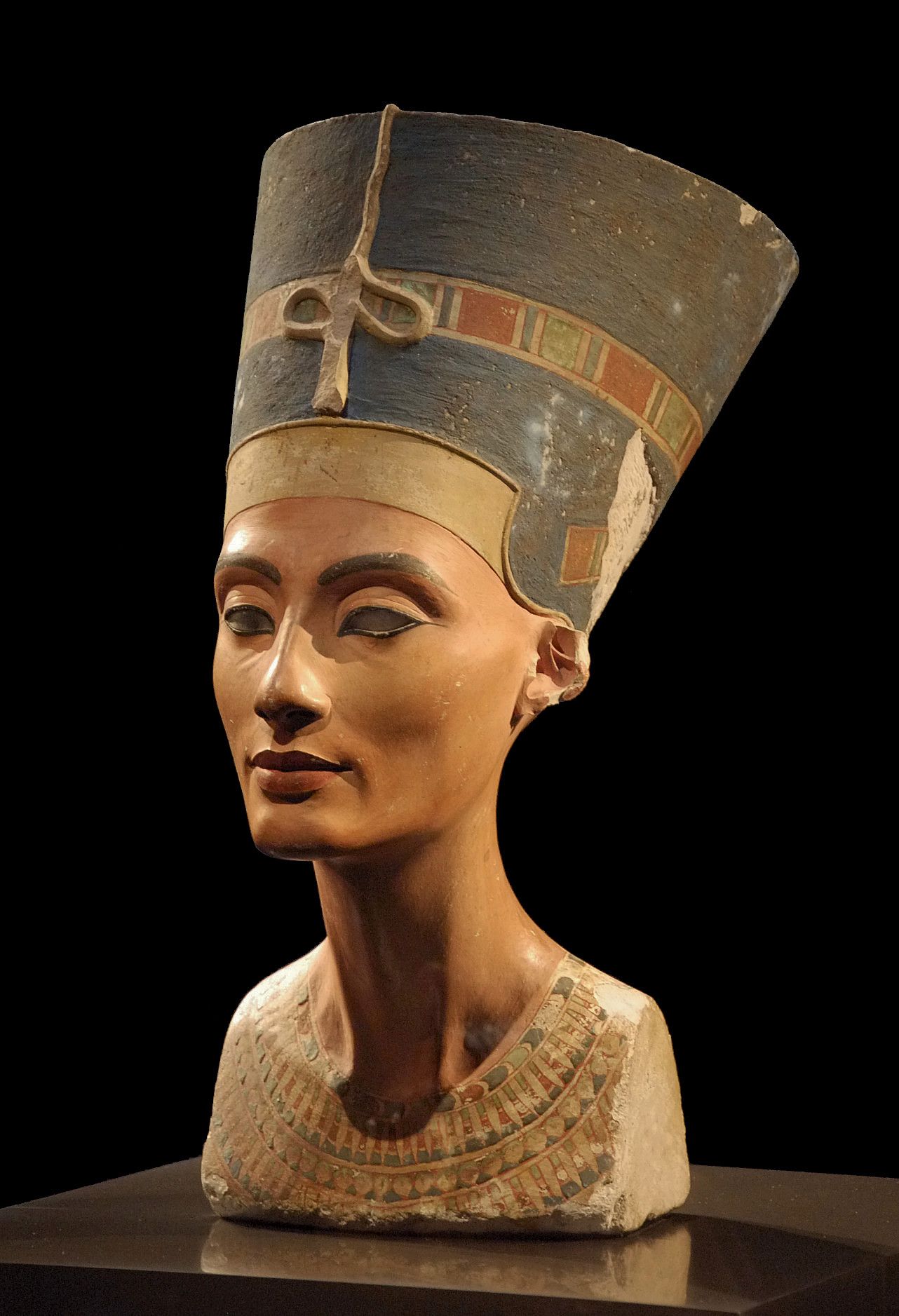
Neferneferuaten Nefertiti (c. 1370 – c. 1330 BC) was an influential queen of the 18th Dynasty in Ancient Egypt. She held the esteemed position of great royal wife to Pharaoh Akhenaten. Together, they implemented a significant transformation in the state’s religious policies, introducing an early form of monotheism called Atenism. This revolutionary belief system centered around the worship of the sun disc, Aten, as a direct connection to the royal household. Nefertiti and her husband reigned during a time that could be considered the height of wealth in ancient Egyptian history.
There is ongoing debate among scholars about whether Nefertiti briefly ruled as Pharaoh under the name Neferneferuaten after the death of her husband but before the ascension of Tutankhamun. If she did assume the role of Pharaoh, her reign would have witnessed the decline of Amarna and the relocation of the capital back to the traditional city of Thebes.
Nefertiti gained enduring fame through her exquisite bust, which is now housed in Berlin’s Neues Museum. The bust, believed to be the work of the sculptor Thutmose, is among the most replicated pieces of ancient Egyptian art. It was discovered in Thutmose’s workshop and has become an iconic representation of Nefertiti’s beauty and influence.
1. Amina
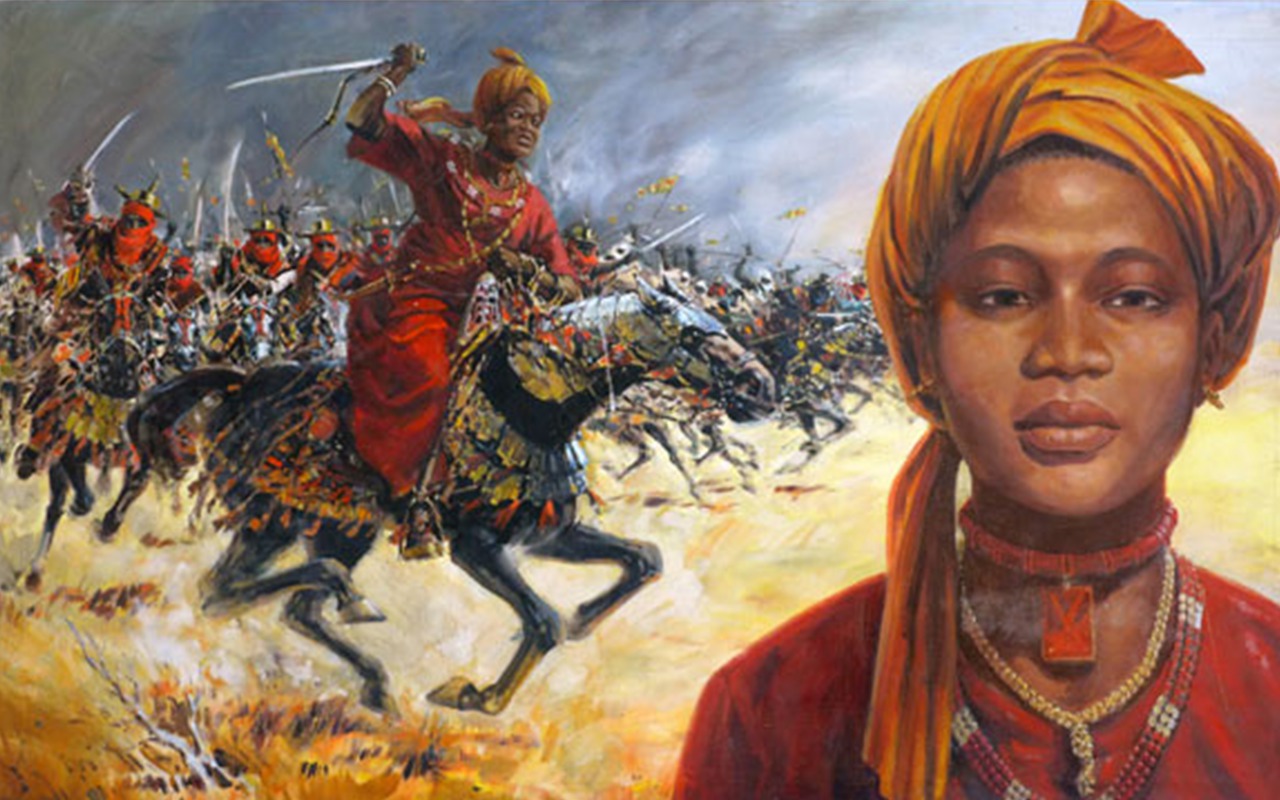
After the passing of her brother Karami in 1576, Amina ascended to the esteemed position of queen. Zazzau was one of the original seven Hausa States, which included Daura, Kano, Gobir, Katsina, Rano, and Garun Gabas. Prior to Amina’s reign, Zazzau held significant prominence and served as a major source of slaves traded by Arab merchants in the slave markets of Kano and Katsina.
Within just three months of being crowned queen, Amina embarked on a remarkable 34-year-long campaign to expand the territory of Zazzau. Her formidable army, comprising 20,000 foot soldiers and 1,000 cavalry troops, was well-disciplined and renowned for their prowess. One of her earliest calls to her people was to ensure their weapons were sharpened, reflecting her dedication to military strength. Amina’s conquests extended as far as Kwararafa and Nupe, as she captured vast stretches of land.
According to legends recounted by Sidney John Hogben, Amina was said to take a new lover in each town she passed through, and tragically, they would meet the same fate in the morning—behe*ded to ensure no witnesses remained. Under Amina’s rule, Zazzau gained unprecedented control over territories. To fortify and safeguard these newly acquired lands, Amina ordered the construction of earthen walls around her cities. These walls, known as ganuwar Amina or Amina’s walls, became a common sight throughout the nation and continued to stand even after the British conquest of Zazzau in 1904. Many of these historic walls endure to this day.
